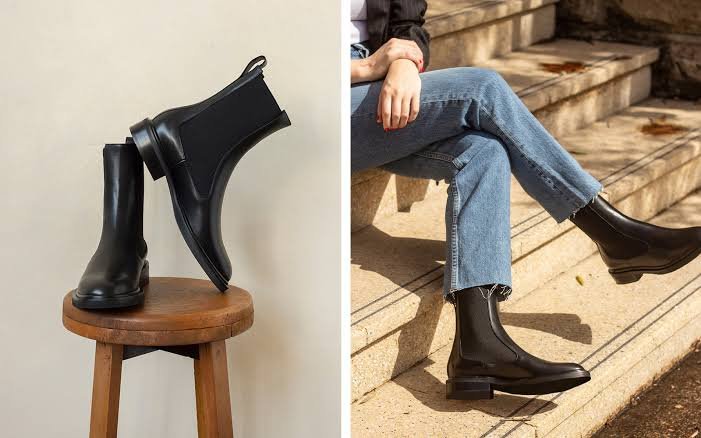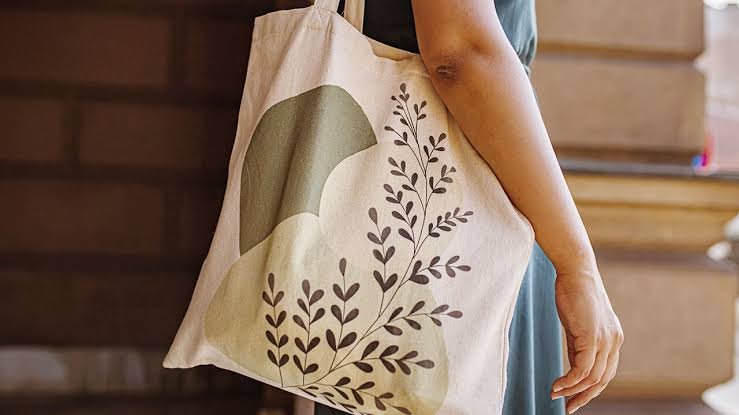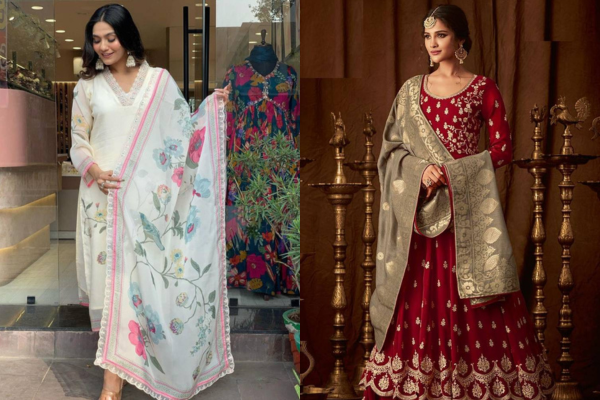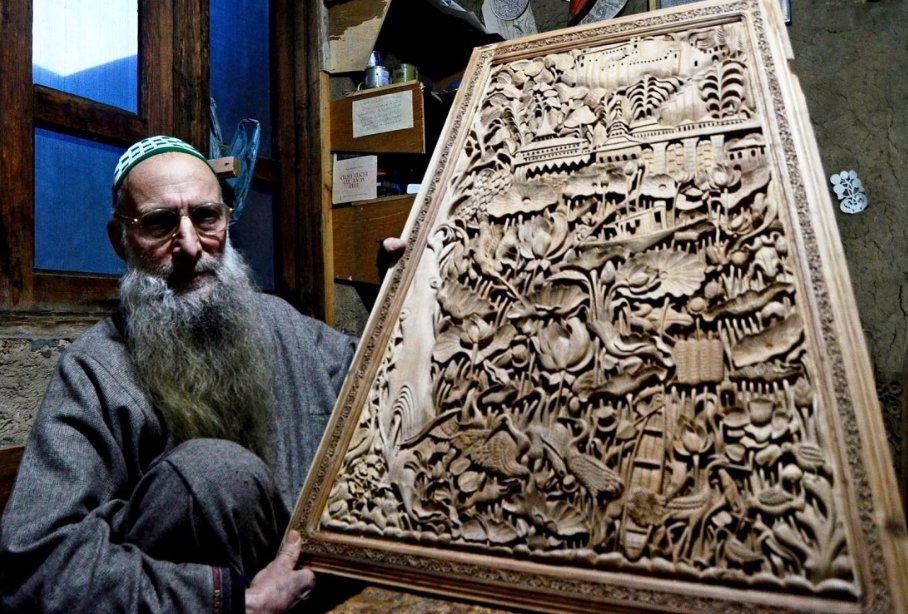Fashion
The Ultimate Guide to Caring for Your Women’s Boots

Key Takeaways
• Understand the importance of cleaning and maintaining different types of women’s boots.
• Learn how to properly store boots to prolong their lifespan.
• Get tips on protecting boots from environmental damage.
• Discover methods for repairing minor damages to keep your boots looking new.
Table of Contents
1. Understanding Boot Materials
2. Cleaning Your Boots
3. Storing Your Boots
4. Protecting Against Environmental Damage
5. Repairing Minor Damages
6. Conclusion
Understanding Boot Materials
Before diving into the specifics of boot care, it’s essential to understand the different materials boots for women are made from. The most common materials include leather, suede, synthetic fabrics, and rubber. Each material has its unique characteristics and requires distinct care techniques.
Although leather boots are renowned for their toughness and timeless appearance, they require routine conditioning to keep the leather pliable and free of cracks. Suede boots offer a softer texture and luxurious appearance but are more prone to stains and require careful handling. Synthetic materials, including faux leather and microfiber, are often easier to clean but may not last as long as genuine leather. Rubber boots are incredibly durable and waterproof, making them perfect for wet conditions, but they need to be kept away from heat sources to prevent cracking.
Cleaning Your Boots
Cleaning your boots properly is essential to preserving their longevity and look. Let’s break down the cleaning methods for different materials:
Cleaning Leather Boots
For leather boots, start by removing dirt and dust with a soft brush or cloth. To carefully clean the surface, use a moist cloth soaked in mild soap. Avoid soaking the leather, as excessive moisture can damage it. After cleaning, apply a leather conditioner to keep the material supple and prevent cracking. Finish by polishing the boots with a suitable leather polish to restore shine.
Cleaning Suede Boots
Suede boots require delicate handling to avoid damage. Scratches and grime can be softly removed with a suede brush. Use a suede eraser or a gentle cloth to apply a solution of white vinegar and water to stains that are difficult to remove. Always allow the boots to air dry naturally, as heat can harden the suede and cause damage. Applying a suede protector spray can help repel water and prevent future stains.
Cleaning Synthetic Boots
Synthetic boots can often withstand more rigorous cleaning methods. Wipe down the surface with a damp cloth and mild soap. Stubborn stains can be tackled with a soft brush and a bit of extra elbow grease. Rinse with clean water and let the boots dry completely before wearing them again.
Cleaning Rubber Boots
For rubber boots, all you need is warm water and mild soap. Use a brush to scrub away dirt and grime, and rinse thoroughly with water. To prevent cracking, avoid drying the boots near heaters or in direct sunlight. Instead, let them air dry naturally in a cool, shaded area.
Storing Your Boots
The secret to keeping your boots looking newer and longer is proper storage. Here are some tips for storing different types of boots:
Using Boot Trees
Boot trees are essential for maintaining the shape of leather and suede boots. Insert the boot trees into your boots when they are not in use to prevent sagging and wrinkles.
Keep Them Dry
Moisture can damage boots, especially those made from leather and suede. Before storing your boots, make sure they are totally dry. To help them keep their form and absorb more moisture, fill damp ones with newspaper.
Store in a Cool, Dry Place
Store your boots away from heat sources and direct sunshine in a cool, dry location. Excessive heat can cause leather and rubber to crack, while damp conditions can lead to mold growth.
Use Dust Bags
For additional protection, store your boots in dust bags or boxes. This helps prevent dust accumulation and keeps them looking fresh between wears.
Protecting Against Environmental Damage
Various environmental factors can affect the condition of your boots. Here’s how to protect them:
Waterproofing
Water and moisture can be detrimental to most boot materials. To prevent water damage, apply a waterproofing spray suitable for the material of your boots. This forms a barrier of defense that deters moisture and keeps your boots dry. Reapply the spray regularly, especially during rainy seasons.
Weatherproofing
Snow and ice are examples of weather conditions that can harm your boots. For leather and suede boots, consider applying a weatherproofing treatment that offers protection against harsh elements. This helps maintain your boots’ quality and appearance during adverse weather conditions.
UV Protection
Extended exposure to sunlight can cause materials like rubber to degrade and discolor the color of your boots. For your boots to retain their color and integrity, store them out of direct sunlight and think about applying a UV-protective spray.
Repairing Minor Damages
Minor damages such as scuffs, scratches, and loose stitching are common issues that can be easily repaired at home:
Fixing Scuffs and Scratches
For leather boots, minor scuffs can be treated with a leather conditioner. Using a gentle cloth, apply the conditioner to the afflicted region in circular motions. Use a leather repair kit that comes with colored creams that match the color of your boot for more serious damage. Suede boots can benefit from a suede brush and eraser to remove surface scuffs.
Reattaching Loose Soles
If the sole of your boot starts to come loose, a strong adhesive designed for footwear can reattach it. Clean both surfaces thoroughly, apply the adhesive, and press them together firmly. Allow the adhesive to dry completely before wearing your boots again.
Repairing Loose Stitching
Loose stitching can be fixed with a needle and thread. Choose a thread color that matches your boots and sew the loose stitches back in place. For major stitching issues, consider taking your boots to a professional cobbler for repair.
Conclusion
Taking care of your women’s boots doesn’t need to feel overwhelming. It starts with grasping the materials used, adopting correct cleaning techniques, ensuring proper storage, shielding them from environmental harm, and promptly fixing any minor issues. By adhering to these steps diligently, you guarantee that your boots retain their pristine condition for an extended period. It’s crucial to recognize that dedicating even a small amount of effort to maintain your boots can significantly prolong their aesthetic appeal, comfort, and utility. Ultimately, a consistent maintenance routine will not only preserve the appearance and feel of your boots but also enhance their longevity, making them a reliable part of your wardrobe for years to come.
Fashion
Choosing the Right Material for Your Custom Tote Bags: A Complete Guide

Custom tote bags are versatile, eco-friendly, and stylish accessories that have become popular in recent years. However, choosing the right material for your custom tote bags can be overwhelming due to the variety of options available. In this comprehensive guide, we will explore the different materials used for custom tote bags, their pros and cons, and how to choose the best material for your needs.
1. Cotton Tote Bags
Cotton is one of the most popular materials for tote bags due to its softness, durability, and eco-friendliness. Cotton tote bags are ideal for everyday use, shopping, and carrying lightweight items. They are also easy to clean and can be machine washed. However, cotton tote bags may shrink when washed and are not as water-resistant as other materials.
2. Canvas Tote Bags
Canvas is a sturdy, heavyweight fabric that is commonly used for tote bags. Canvas tote bags are durable, water-resistant, and can carry heavier loads compared to cotton tote bags. They are ideal for carrying groceries, books, and other heavy items. However, canvas tote bags may be more expensive than other materials and can be difficult to clean.
3. Polyester Tote Bags
Polyester is a synthetic material that is lightweight, durable, and water-resistant. Polyester tote bags are often used for promotional purposes due to their affordability and vibrant colors. They are also easy to clean and can be machine washed. However, polyester tote bags may not be as eco-friendly as cotton or canvas tote bags due to their synthetic nature.
4. Jute Tote Bags
Jute is a natural fiber that is eco-friendly, biodegradable, and durable. Jute tote bags are often used as an alternative to plastic bags due to their sustainability. They are ideal for carrying groceries, beach essentials, and other items. However, jute tote bags may be rough to the touch and less flexible compared to cotton or canvas tote bags.
Conclusion
Choosing the right material for your custom tote bags depends on your needs, budget, and environmental concerns. Cotton tote bags are ideal for everyday use, while canvas tote bags are suitable for heavy-duty use. Polyester tote bags are affordable and vibrant, while jute tote bags are eco-friendly and sustainable. Consider these factors carefully to choose the best material for your custom tote bags.
Fashion
Explore the Dynamic Universe of Salwar Suits for Women

The salwar suit has become an essential Indian ethnic wear staple for women. Comprising a tunic style kameez combined with pants called salwars, the salwar suit effortlessly fues comfort and elegance. Over the years, its basic format has inspired numerous variations catering to various styles, body types, regions and occasions – let’s look at some popular salwar suits that provide daily convenience while adding ceremonial grandeur!
Quintessential Straight-Cut Salwar Suit
Start small with the humble straight suit – an understated wardrobe must for everyday wear. True to its name, this ensemble includes a straight-cut kameez with slim-fitting salwars made of georgette, chiffon or crepe fabrics and without flares or frills for an understated yet versatile appeal.
Stay detail oriented though – metallic buttons, line embroidery and block prints along hems lends tasteful accenting. Crisp digital prints and soothing pastels keep the look fresh. Style tip – belt the kameez at the natural waistline over contrast salwar for definition. Complete with a printed dupatta.
The straight suit flatters most body types cleanly. Blend with other pieces easily by teaming cotton straight kurtis with jeans, pants, skirts and even dhotis! Ideal for casual office days, afternoon get-togethers and everyday ethnic wear needs.
Anarkali – Redefining Opulence
If your style leans grand and opulent, the magnificent Anarkali suit spells your calling. Historically inspired by court dancers, this ensemble creates lavish movement with its sweeping silhouette.
The signature Anarkali feature is the frock-style kameez starting slim and fitted at the torso before billowing dramatically outwards, sometimes in gentle gathers or bouncy tiers. The voluminous skirt falls till the ankles, traditionally in luxurious fabrics like silks, fine net, velvet, brocade and zardosi-embedded weaves.
Marvel at the graceful sway as you walk! Anarkalis keep the look demure yet dazzling with keyhole necklines, three-quarter sleeves and statement sheer dupattas edged with zari. Contrast side slits, bold zari borders and beaded embellishments enrich the regal charm.
Contemporary Anarkali interpretations reveal sharara pants or slim churidars instead of the secret petticoat worn traditionally. Cropped lengths make this style fusion and partywear ready! Blouse-style Anarkali tops paired with palazzos also create head-turning Indo-western looks.
Breezy Bohemian: The Palazzo Suit
If easygoing elegance is what you crave, slip into a sublime palazzo suit. Palazzos comprise voluminous wide-legged pants cinched at the waist for plush comfort. The extra fabric creates languorous movement while allowing lots of freedom.
Beautifully crafted from breathable cottons, silks, rayon and light linens; the palazzo’s versatility effortlessly spans seasons and occasions. Vivid digital prints, soothing pastels and embroidered motifs in palazzos make both ethnic and fusion statements.
The relaxed palazzo is teamed aptly with easy-fitting short to long kurtis or airy Kaftan style tops. Cinch judciously with kamarbands or decorative belts to define the waist. Keep hair and makeup natural for laidback feels.
Straight cut palazzo suits keep the look minimalist and modern. Occasionwear styles can introduce lavish lace trims, intricate zardosi borders, statement sleeves and rich Banarsi fabrics.
Quintessential Patiala Suit
Any exploration of Indian ensembles remains incomplete without appreciating the iconic Patiala salwar suit and its larger-than-life signature charm! Originating in the royal province of Patiala in Punjab, it brings together ethnic flair, vibrant energy and trademark comfort.
The soul of a Patiala lies in its gathered salwar crafted from wrinkle-free cotton, airy muslin or flowing silk. A sequence of equally spaced out horizontal soft pleats across the front culiminates in a billowing silhouette towards the ankle. Multiple folds originate stylishly from the center crotch released by broad side slits and a drawcord waistband – allowing freedom of movement and a flattering shape. Patiala pants lend definition at the waistline and ankle.
Reflecting the region’s lively spirit, Patialas gloriously celebrate colors, intricate phulkari embroidery, mirrorwork and bandhej prints in kameez and dupatta designs. Contrast combinations add further aesthetic pop. Accessorize ornately with oxidized silver jewellery, parrandas and juttis. Retain the signature gathered shape of the salwar as it defines this beloved suit style.
Festivewear patialas can play with more lavish textiles like silks and velvets. Or introduce overlays, sheer panels and gharara pants. But comfort must be uncompromised!
Strut into festivities in full Patiala glory to channel that iconic Punjabi joie de vivre! This dynamic suit adapts well into fusion clothing too with trendy cuts and Indowestern combinations while retaining its heritage.
Stay in touch to get more updates & news on theblogoti!
Fashion
Kashmiri Wood Carving: Artistry Etched in Timber
Kashmiri Wood Carving: Artistry Etched in Timber

Kashmiri Wood Carving: A Timeless Art of Craftsmanship, Culture, and History
A monument to the unmatched skill of the area, Kashmiri wood carving is an art form that has survived decades. Distinguished by its elaborate patterns and minute details, this traditional craft not only highlights Kashmir’s rich cultural legacy but also the commitment and talent of its craftspeople. Kashmiri wood carving is a cultural story carved in wood, based in history and nourished by time.
It’s difficult to come across the craft in the modern concrete jungles but if you ever decide to visit the place, you could choose from a range of Jammu and Kashmir tour packages and experience the craftsmanship on your journey. One of the best time to visit is when winter is just about to start. You could look up a guide to Kashmir in September to plan your journey in advance.
History of Kashmiri Wood Carving
The Kashmir Valley first saw the introduction of Persian woodcarving skills by the patron of the arts Sultan Zain-ul-Abidin in the fifteenth century. As indigenous styles and these methods combined over time, a distinctively Kashmiri style of wood carving was produced. Under the great connoisseurs of art and beauty, the Mughal rulers, this craft developed. intricate floral and geometric patterns that define Kashmiri wood carving are clearly influenced by the Mughals.
Creating Art from Timber
Turning wood into an artwork takes time and attention to detail. First, you have to choose the appropriate kind of wood. Given its exquisite texture and robustness, walnut wood—known locally as “Doon Kul”—is the material of choice. Less frequently used other woods include chinar and deodar.
After selection, the wood is aged to lower moisture content and stop warping in the future. This is an important stage since badly seasoned wood can split and shatter, destroying the fine carvings. After that, the aged wood is shaped and sized as needed and delivered to the craftsmen.
Many different chisels, each with a particular function, are used in carving. ‘Naqash’, the master craftsman, starts by sketching the design onto the wood. This design can have elaborate calligraphy and latticework or classic elements like the “chinar leaf” and “lotus flower.” The Naqash then painstakingly carves out the design, a procedure that, depending on the intricacy of the pattern, might take days or months.
The carving is finished, and then the piece is polished and sanded to bring out the wood’s inherent grain. Sometimes the wood is given a glossy sheen and protection by applying a coat of lacquer. A magnificent work of art, the finished result reflects the commitment and talent of the craftsmen.
The Appeal of Kashmiri Wood Carving Visually
A signature of this trade is floral arrangements, which are influenced by the verdant surroundings of the area. popular motif, the “Chinar” leaf, represents the native Chinar trees of Kashmir. Reminiscent of Islamic art, geometric patterns and latticework are also common.
The inherent beauty of walnut wood adds yet another level of visual appeal to these carvings. Together with the exquisite carving details, the rich, dark tones of the wood produce a visual marvel. Whether a piece of furniture, a decorative panel, or a straightforward box, each one narrates the cultural legacy of the area and the artist’s talent.
What Kashmiri Wood Carving Means Culturally
Not only an art form, Kashmiri wood carving is an important part of the local way of life. Every artist has learned the techniques from their predecessors, as this craft has been handed down through the years. It provides a livelihood for a large number of local households and is essential to maintaining Kashmir’s cultural legacy.
Furthermore, these sculptures find frequent application in religious and cultural settings. Inside Kashmiri mosques and shrines, elaborately carved wooden panels enhance the spiritual atmosphere. The value of this skill in daily life is d uun emonstrated by the exquisitely carved wooden furniture and ceilings seen in traditional Kashmiri dwellings.
Issues and Prospects for Kashmiri Wood Carving
The Kashmiri wood carving industry faces many difficulties despite its rich cultural legacy. The regional political unrest has hurt the craftsmen and their businesses. Additionally affecting the traditional craft are changing market needs, limited access to high-quality wood, and competition from machine-made goods.
Hope does exist, though. This art form is trying to be revived and maintained. Better resources and market access for craftsmen are being sought by government programmes and nonprofit organisations. There are training courses being run to entice the next generation to choose this trade. Further expanding the markets for Kashmiri wood carvings is the growing worldwide admiration for artisanal, handcrafted goods.
Conclusion
Beyond merely an artistic expression, Kashmiri wood carving captures the history, culture, and unwavering spirit of the local populace. Every sculpture is evidence of the talent and commitment of the craftsmen who have maintained this trade for ages. These old crafts must be supported and preserved as we move towards a future that values sustainability and cultural legacy.
By doing so, we guarantee that the tales and talents of these craftspeople will continue to motivate future generations, in addition to safeguarding a major part of our cultural legacy. A light of creativity and tradition in a world where mass-produced products rule, Kashmiri wood carving is remarkable. It is a reminder of the ageless beauty that may be produced with basic instruments and deft hands.
-

 Technology3 months ago
Technology3 months agoExploring Entretech.org: Unveiling the Future
-

 Technology3 months ago
Technology3 months agoGPT66X: Revolutionizing Language Models
-

 Eentertainment4 months ago
Eentertainment4 months agoThe Flower of Veneration Chapter 1: A Journey into Intriguing Realms
-

 Life Style3 months ago
Life Style3 months agoExploring Myfavouriteplaces.org:// blog: A Journey Begins
-

 Games3 months ago
Games3 months agoFour Digits to Memorize: Unlocking the Power of Memory
-

 Technology4 months ago
Technology4 months agoAmazons GPT55X: Revolutionizing Natural Language Processing
-

 Technology3 months ago
Technology3 months agoUnlocking the Potential of TrendzGuruji.me for Awareness
-

 Technology4 months ago
Technology4 months agoUnderstanding “qxefv” and Its Impact on Diverse Industries






















